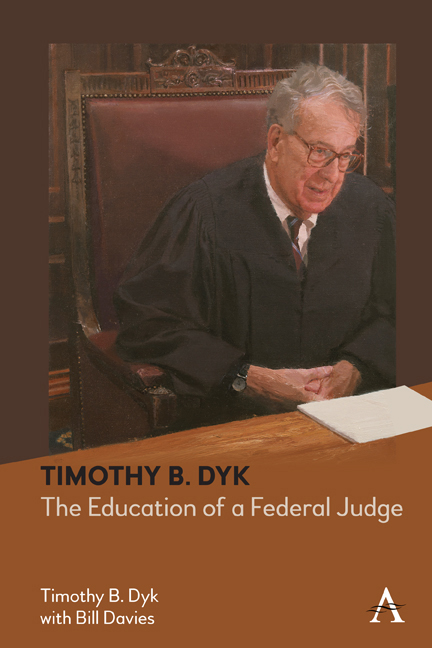Book contents
- Frontmatter
- Dedtication
- Contents
- Foreword
- Acknowledgments
- 1 Introduction
- 2 Family History
- 3 Early Life and Schooling, 1937–61
- 4 Clerking at the Supreme Court, 1961–63
- 5 The Tax Division, 1963–64
- 6 Wilmer Cutler, 1964–90
- 7 Jones Day, 1990–2000
- 8 Reflections on Changes in the Legal Profession
- 9 Becoming a Federal Judge, 1993–2000
- 10 The Confirmation Process, 1998–2000: Selected Diary Entries
- 11 Life as a Federal Judge, 2000–the Present
- 12 Epilogue
- Appendix
- Index
6 - Wilmer Cutler, 1964–90
Published online by Cambridge University Press: 15 September 2022
- Frontmatter
- Dedtication
- Contents
- Foreword
- Acknowledgments
- 1 Introduction
- 2 Family History
- 3 Early Life and Schooling, 1937–61
- 4 Clerking at the Supreme Court, 1961–63
- 5 The Tax Division, 1963–64
- 6 Wilmer Cutler, 1964–90
- 7 Jones Day, 1990–2000
- 8 Reflections on Changes in the Legal Profession
- 9 Becoming a Federal Judge, 1993–2000
- 10 The Confirmation Process, 1998–2000: Selected Diary Entries
- 11 Life as a Federal Judge, 2000–the Present
- 12 Epilogue
- Appendix
- Index
Summary
Moving into Private Practice
My time at the Department of Justice had been a source of great satisfaction, but my appointment as a special assistant was only for one year. In spring 1964, I began to look for another job in private practice. I made a mistake by not accepting the opportunity to serve as an assistant US attorney in the US attorney's office in Washington, DC, something that was then available to people who had served as special assistants at justice. You could sign up for a six-month tour of duty, but I did not do that. What I missed was the valuable opportunity to try jury cases, something that I never had in private practice.
I felt some urgency about getting started in private practice. By that time, I had caught the Washington bug and did not consider returning to New York. Among the appeals of Washington was the revolving door. I could join a firm, leave for a period to serve in the executive branch and then return to the firm, the Washington firms’ often being tolerant and even encouraging of such detours. In my case it never happened, but that prospect was a major factor in my decision to stay in Washington.
At that time, there was no such thing as a clerkship bonus for those who had served as Supreme Court law clerks (as evidenced by my New York firm experience), and there was not any great rush by the firms to hire people who had clerked. So, I had to find a firm rather than waiting for a firm to find me. Washington was not then the vibrant center of national practice that it became in later years. Federal regulatory practice at the law firms in Washington in the early 1960s was limited. Since regulatory practice was what I wanted, my choices were similarly limited. In my mind, it boiled down to Covington & Burling, Arnold, Fortas & Porter (A, F & P) and Wilmer, Cutler & Pickering.
Covington had 100 lawyers in 1960 and was growing. A, F & P had 31 and Wilmer 22 by the end of 1963. From the outset, I did not seriously consider Covington for the simple reason that I wanted to join a firm where I was likely to become a partner.
- Type
- Chapter
- Information
- Timothy B. DykThe Education of a Federal Judge, pp. 75 - 114Publisher: Anthem PressPrint publication year: 2022

